Go To A Temple Festival In Japan! Nishiarai Daishi's "Osame no Daishi"

Nishiarai Daishi is a well-known temple connected to the famed Buddhist priest, Kukai, also known as Kobo Daishi. We participated in their largest festival, the Osame no Daishi, with some of the guests staying at Emblem Hostel Nishiarai.
One of the must-see sights within Tokyo's Adachi ward is Nishiarai Daishi, a temple with an ancient and very esteemed origin. Famously known as a one of Japan's flower temples, the spacious grounds of this sacred site are full of seasonal blooms all year long. Although it is fun to simply stroll through these beautiful grounds, every month on the 21st, an Ennichi festival (*1) takes place and visiting on such a day is strongly recommended. These bustling events are not just popular with locals, though. In fact. a great number of worshipers come quite the distance to enjoy the festivities for themselves.
This time, we joined in on the 21st to participate in a particularly impressive event, the Osame no Daishi, with a group of visitors to Japan, and got their impressions on the event as well.
The people that provided us all with guidance were the helpful staff of Emblem Hostel Nishiarai. This helpful guidance is provided in order to further enrich the experiences had in Japan by travelers from abroad, allowing people to take part in events that they might otherwise miss out on.
*1 Ennichi: a set or long-established event or festival day at a given temple. On these days, food stalls are set up in the grounds and more visitors than usual come to the temple.
What Kind of Temple Is Nishiarai Daishi?
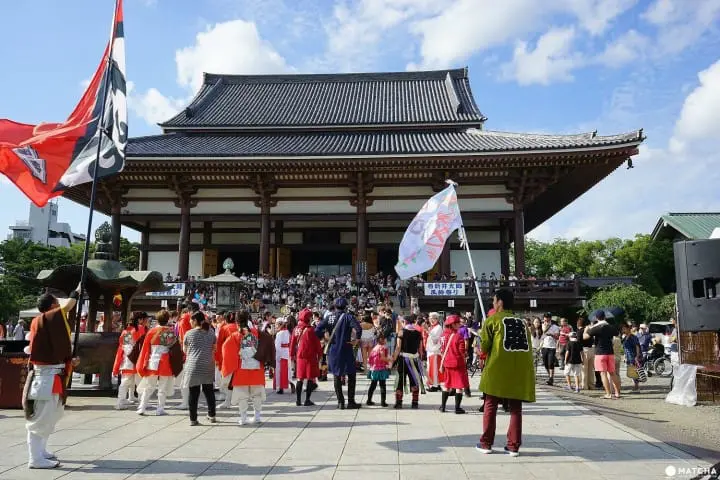
2016 summer Yosakoi festival at Nishiarai Daishi Temple
Nishiarai Daishi, also known as Soujiji, is one of the temples that Kobo Daishi (*2) is said to have founded during his pilgrimage in the Kanto region. Known for its abilities to ward off evil, this temple is famous for dispelling bad luck or feelings of ill will.
As every 21st of the month is Kobo Daishi's festival day, an event of some kind takes place here on this day. With many more worshipers coming to the temple and lots of small shops selling famous Nishiarai local products here on these days, the 21st is the perfect day for international visitors to visit and learn more about Nishiarai and Japanese culture.
Of all the festivities held here throughout the year, the Osame no Daishi, which is the last Ennichi festival of the year, held just before the New Year on December 21st, is an exceptionally lively event day.
*2 Kobo Daishi (774-835): the originator of the Shingon sect of Japanese Buddhism to which most Japanese follow and overall a major contributor to the spread of Buddhism in Japan; also known as Kukai.
Going With Guests to Take Part in Osame no Daishi!
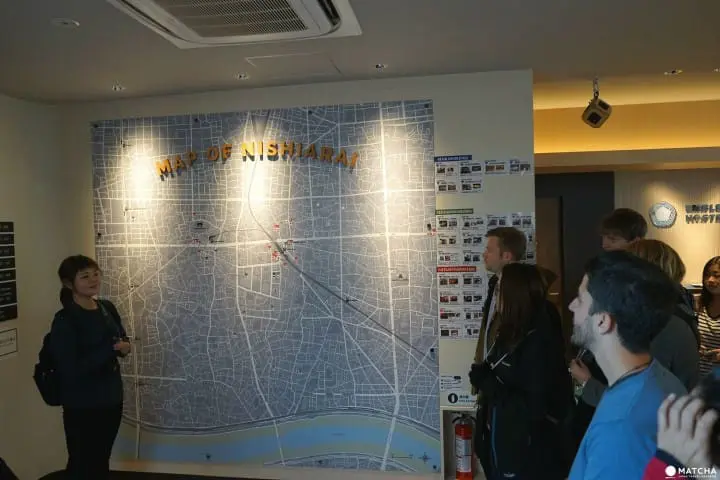
Here you can see all the guests that told the Emblem Hostel "We want to see the Osame no Daishi!". For this event, it was possible for non-guests of the hostel to take part as well in the tour.
All of the participants gathered in the hostel's lobby first, in order to take a closer look at the map and check the location of Nishiarai Daishi before heading out the door. There was no fixed time to return at or any requirements to return together as a group, so everyone was eagerly studying the map in order to make certain of not only where they were going, but of the route home as well.
Now that we had confirmed the location, it was time to head out!
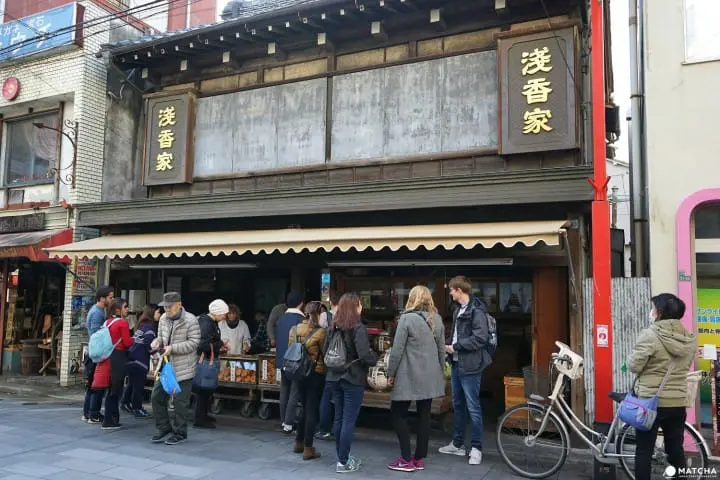
After walking for 15 minutes, we arrived at Shoueikai, the shopping street lining the road towards the temple. Everyone was captivated from the start by Asakaya, a shop selling one of the region's famous products, sembei, and stopped by to take a closer look. Although some might think a rice cracker is a rice cracker, this specialty shop sells 20 different varieties of this uniquely Japanese snack. Only in Nishiarai can you find food culture like this.
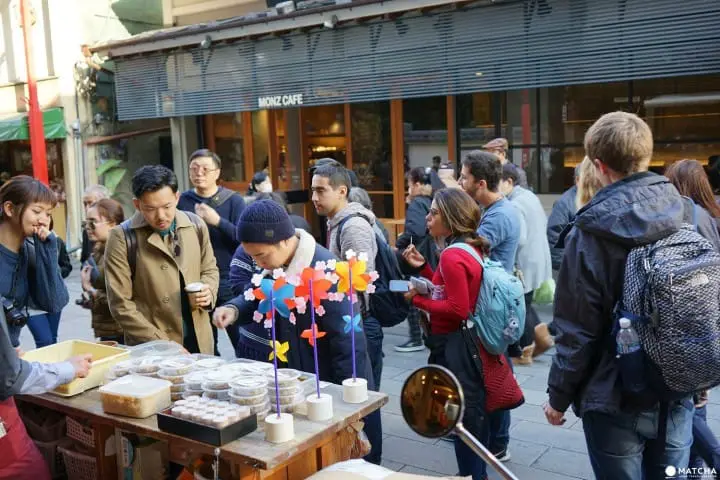
After visiting the sembei shop, next was the mameya-san, a bean store. There are many different kinds of beans and each has its own distinct flavor. This time, instead of just looking here, our guests actually tried some of the foods too.
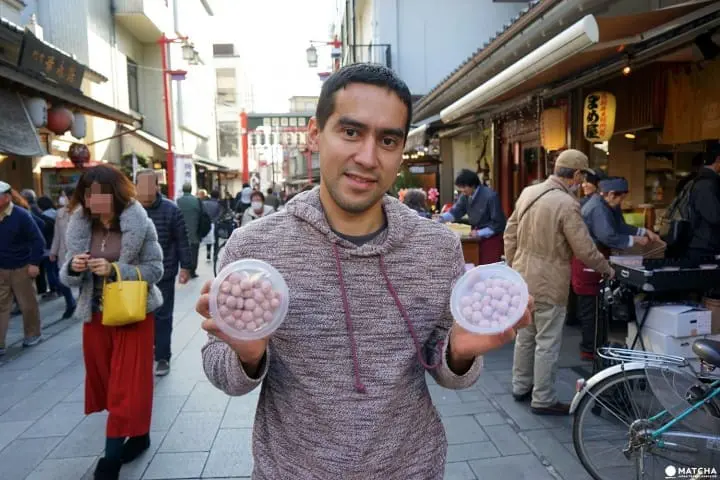
These are the dried beans that were sold here. Luiz from Venezuela bought some of these delicious beans to take back home as souvenirs. "I got 10 of them for 500 yen!" he told us, happily.
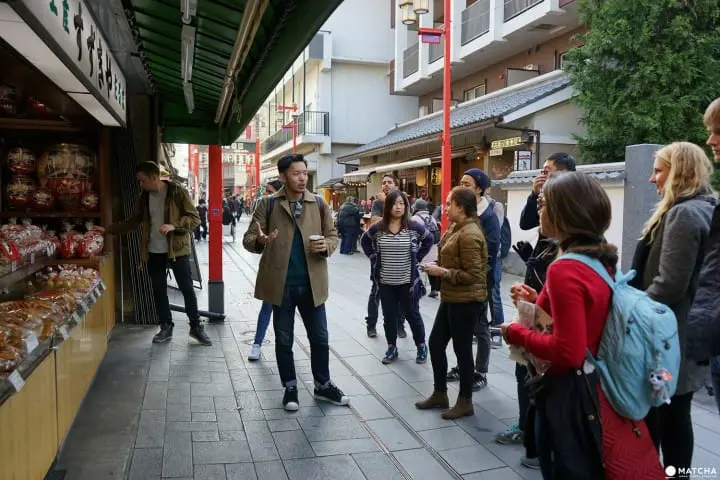
At a later souvenir shop we encountered some daruma, which the Emblem Hostel staff very kindly explained the meaning and significance of to the guests.
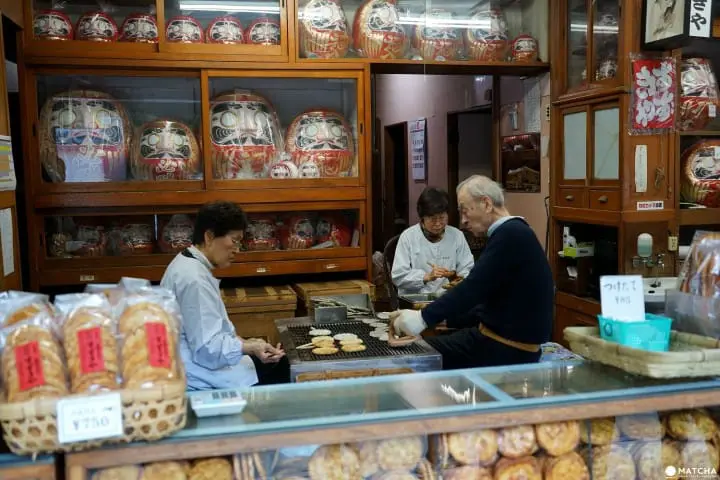
The way in which the shops are laid out along Shoueikai allows passersby to peer into the shops easily and see their inner workings; for example, at the sembei shop, we were able to see just how sembei are roasted.
The guests all said that they were impressed with the skills of the various craftspeople in these shops.
With so many new and novel things to see, it was really hard to us to keep moving forward to the temple! But it was also nice to leisurely take in the atmosphere of the Nishiarai area too.
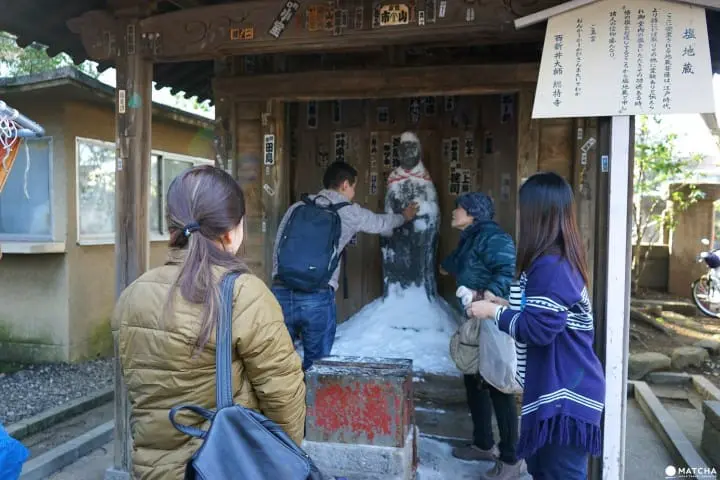
Just when we were almost to the main temple building, we caught sight of a Shio Jizo. This is an unusual type of Japanese Buddhist statue, wherein a figure of Jizo is covered in table salt.
Here we learned from one of the locals the proper way in which to pray to this particular type of Jizo statue. First you pick up some of the salt at the statue's feet and then rub the salt on the part of the statue's body that you are having trouble with (for example, if you have knee pain, you rub the salt on the statue's knee). By doing so, it is believed that your pain will be taken away. Luiz tried it right away!
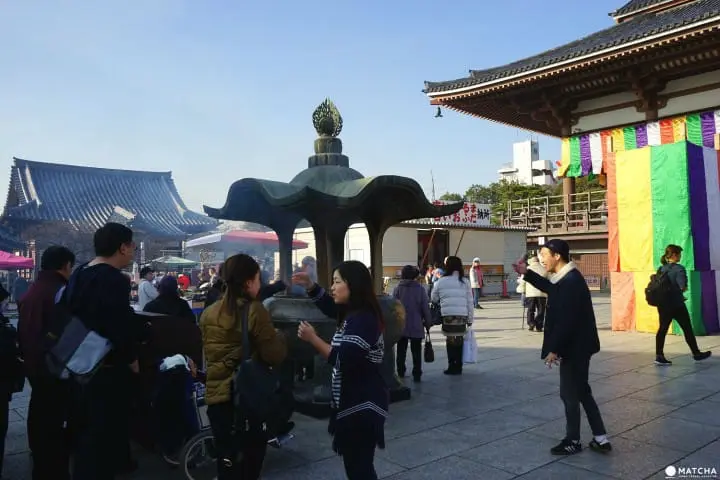
Once we had finally arrived outside the main temple, everyone first took a moment to purify themselves with the smoke from the smoldering incense sticks by wafting it towards themselves.
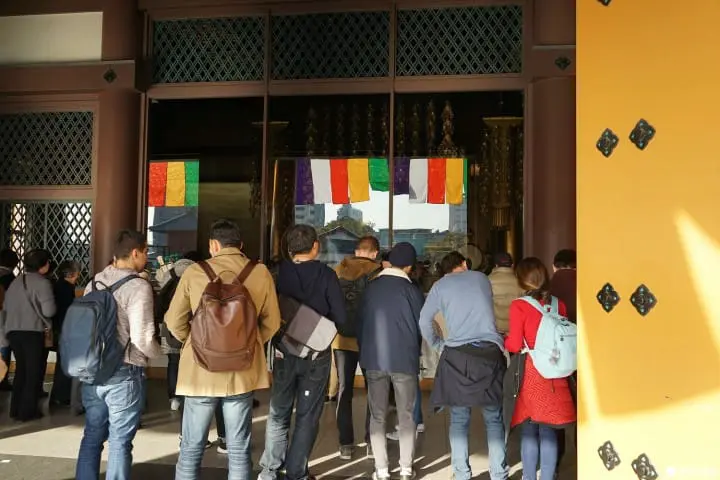
After everyone was instructed in the proper manner of visiting a temple, everyone gave their greetings to the guardian deity of the temple in the main hall.
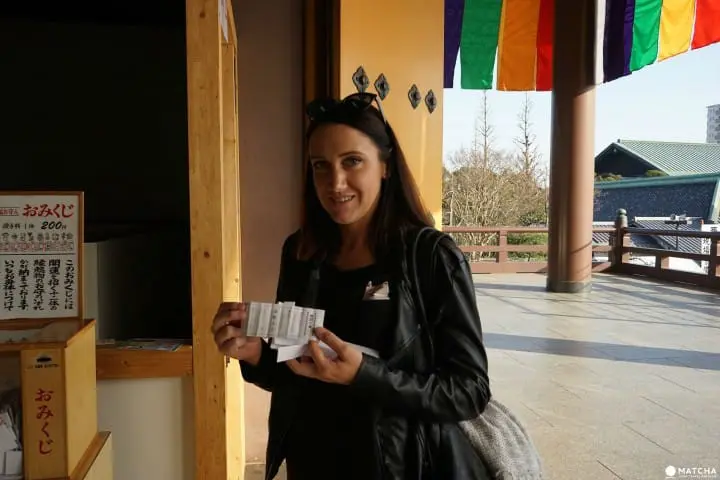
And because we had all come this far to visit Nishiarai Daishi, we decided to try out our omikuji, and Rachel (from Australia) got daikichi, which is the luckiest fortune of them all!
"I'm going to keep this as a memento of my time here at Nishiarai Daishi," she said.
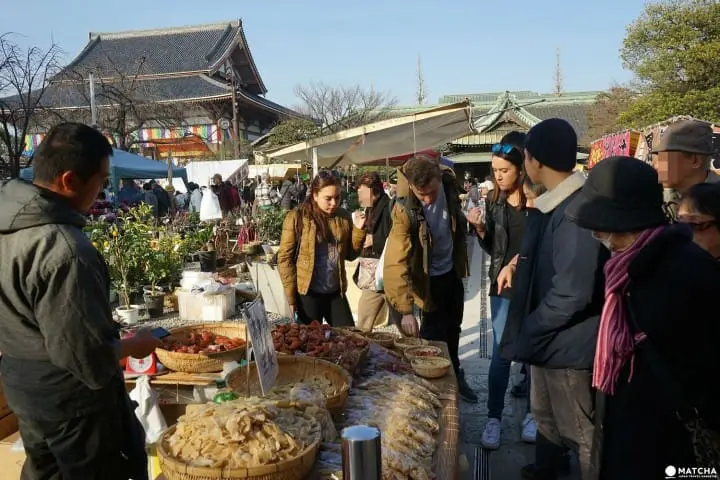
And after paying our respects at the temple, everyone was very excited to see the stallholders and yatai, or food carts, in the temple grounds and wanted to try out some of the unusual dishes these shops sell, all the while taking in the sights and sounds of the Osame no Daishi event to the fullest.
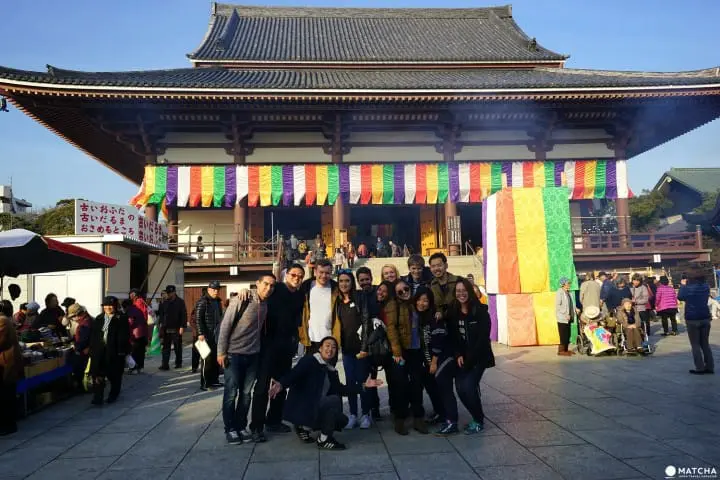
At the end, everyone took a commemorative photo together.
Not only did we all get to learn about Japanese culture, but we even discovered many new things here in Nishiarai. The smiling faces of the guests really say it all - everyone really enjoyed sharing in the fun of Nishiarai Daishi's festival day.
In Conclusion
What do you think? If you are going to be visiting Adachi ward, then please make a trip to see Nishiarai Daishi, especially if you can visit on the 21st - you are sure to have a wonderful time amid the bustling crowds at their next event.
If you would like to make some international friends, or want to see the temple festivals held at Nishiarai Daishi, then please get in touch with the staff at Emblem Hostel Nishiarai.
Read also:
EMBLEM Hostel Nishiarai: A Bond Between Travelers And Locals
3 Million Visitors in 3 Days! Kawasaki Daishi, Kanagawa
The Koubou Ichi Market at Toji
Ramona, English content editor at MATCHA since 2016, has been practicing ikebana flower arrangement (Ikenobo School) and tea ceremony (Omote Senke) since 2012. She arrived in Japan in 2012 as a graduate student with a focus on Japanese literature and performing arts. As a travel editor and writer, Ramona has visited and documented 40 of Japan's prefectures with a focus on art, history, traditional Japanese crafts, and performing arts.







































![[Coupon Available] Attention Overseas Winter Sports Fans! Nagano's Sports Depot Has Evolved](https://resources.matcha-jp.com/resize/720x2000/2026/01/05-254819.webp)
![[2 hours from Tokyo ] 10 Quiet and Breathtaking Views of Mount Fuji in Yamanashi Hokuto City , Yamanashi - Part 2](https://resources.matcha-jp.com/resize/720x2000/2025/12/16-253037.webp)
